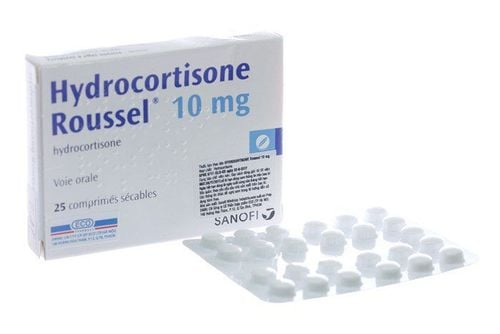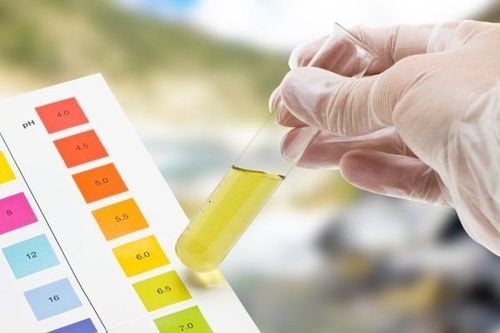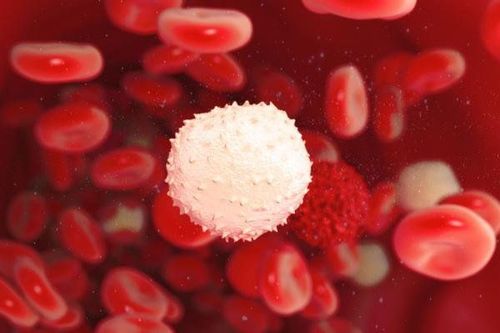This is an automatically translated article.
Chronic lymphocytic leukemia (or chronic lymphocytic leukemia) is a hematopoietic malignancy that directly involves lymphocytes and tends to progress slowly over many years.1. Diagnosis of chronic lymphocytic leukemia
After taking the patient's history and clinical manifestations, the doctor will order laboratory tests to diagnose chronic lymphocytic leukemia as well as search for the most effective treatment methods for the disease. core. Ideally, patients should consult a hematologic oncologist who specializes in the study of malignancies of the blood system.The tests and techniques listed below are not always available to all patients. Specific selection depends on the following factors:
Suspected form of leukemia Patient's clinical signs and symptoms Age and general health Results of previous laboratory tests. The following tests are used to diagnose chronic lymphocytic leukemia:
Blood count This is the first test in the diagnostic process, also known as a complete blood count. - CBC). A CBC gives a count of each type of blood cell from a patient's blood sample. An elevated white blood cell count, especially in the lymphocyte group, is a feature of chronic lymphocytic leukemia. Patients can also face anemia due to decreased red blood cell production and decreased platelet count.
A blood count is also used to collect abnormal white blood cells for tests that detect specific gene markers and predict the risk of disease progression.
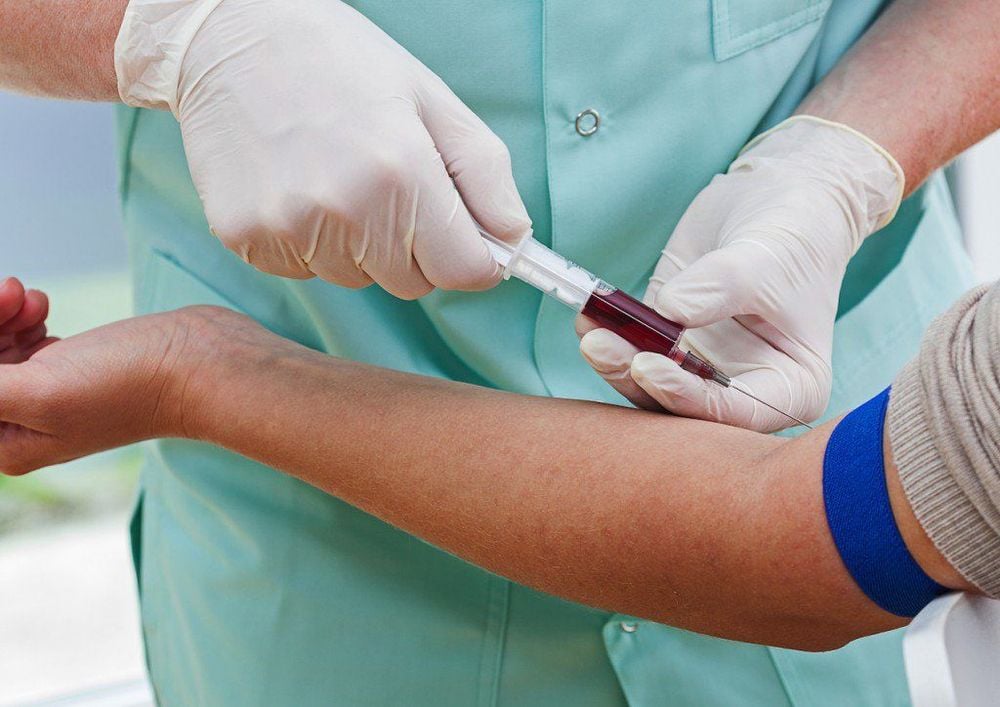
Xét nghiệm công thức máu là xét nghiệm đầu tiên trong quá trình chẩn đoán bệnh
Molecular genetic testing Your doctor may order abnormal white blood cells to detect specific changes in genes, proteins, or chromosomes. Because chronic lymphocytic leukemia cells divide very slowly, observing chromosomal changes is often not as helpful as detecting specific genetic mutations. Fluorescence in situ hybridization (FISH) or gene amplification (PCR) are commonly used techniques. Some of the genetic variations detected in chronic lymphocytic leukemia are:
Long arm deletion mutation on chromosome 13, found in about 50% of cases. Trisomy 12 is an extra chromosome 12. Loss of long arm of chromosome 11. Loss of short arm of chromosome 17. Mutation of NOTCH1, SF3B1, MYD88 genes. Abnormal TP53. The results of genetic analysis can help predict disease progression and select appropriate treatment. For example, carriers of the short arm of chromosome 17 will have more difficulty with treatment, and only certain treatments will be effective for this group of patients.
Diagnostic Imaging Although the diagnosis of chronic lymphocytic leukemia is made early, the disease has also affected many different organs of the body. There is almost no need for imaging tools to diagnose the disease. Their role is often played before treatment decisions are made to identify affected organs and monitor treatment outcomes.
X-ray film : To show the increased size of the lymph nodes in the chest. CT scan: Detects lymph nodes around the heart, lungs, trachea, and abdomen. CT scans can be used to measure the exact size of the lymph nodes and detect chronic lymphocytic leukemia in different organs. Occasionally, contrast-enhanced CT scans are also required to produce more detailed images. Contrast is injected into a vein or given to the patient orally. The patient's renal function should be checked prior to contrast imaging. CT scan is usually not necessary when the patient does not have any clinical manifestations. Bone marrow aspiration and biopsy Chronic lymphocytic leukemia is often diagnosed with blood tests because cancer cells are easily found in the blood. A bone marrow biopsy may not be necessary to confirm the disease but is necessary before starting treatment. For some patients, aspiration and biopsy can also help predict recovery and explain exactly why blood tests are abnormal.
Aspiration and biopsy can be done at the same time. Bone marrow is made up of hardware and software. Aspiration aspiration removes the soft tissue portion of the pulp, which is a sample of spinal fluid. A marrow biopsy is used to remove hard tissue. The most commonly chosen site for sampling is the pelvis. The patient will be anesthetized prior to the procedure. Results are read by pathologists.
Your doctor may recommend that you perform other tests before starting treatment to understand the characteristics of the disease and plan treatment. After all the tests are done, the doctor will summarize the information and stage the disease.
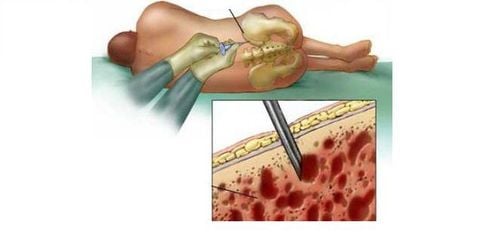
Sinh thiết tủy xương có thể không cần để khẳng định bệnh nhưng cần thiết trước khi tiến hành điều trị
2. Treatment of chronic lymphocytic leukemia
For malignancies, many doctors from different specialties need to work together to develop a comprehensive and effective treatment plan. This is called multidisciplinary treatment. Treatment options depend on many factors such as the type of leukemia and stage of the disease, possible side effects, and the patient's preferences, age, and general health. Chronic lymphocytic leukemia usually progresses very slowly, many people don't need treatment right away, and a few don't even need treatment. Although the effectiveness of treatment has improved markedly today, it is not certain whether chronic lymphocytic leukemia can be completely eliminated. The goal of treatment is to relieve symptoms. Treatment of chronic lymphocytic leukemia is divided into several groups. Patients need to read to know the treatment methods to discuss and present their wishes to the doctors.Watch and wait Patients who develop clinical symptoms and/or elevated lymphocyte counts in the blood, lymph nodes, or spleen usually require immediate treatment after diagnosis. Clinically asymptomatic early-stage chronic lymphocytic leukemia is recommended for close follow-up without treatment.
Clinical examination and blood tests should be done regularly. If the disease worsens, aggressive treatment should be initiated. Warning signs include:
The patient often feels tired and more tired than before. Night sweats Lymph nodes increase in size Low red blood cell or platelet count. Many studies show that this approach does not harm patients at an early stage of disease. Patients whose blood counts have not changed over months or years may only need blood tests every 3 to 6 months.
The early stages of the disease are a window of opportunity to improve overall health. Patients need to stop smoking and get vaccinated against some diseases. Note that herpes zoster vaccine (shingles vaccine) should not be given to people with chronic lymphocytic leukemia.
Chemotherapy
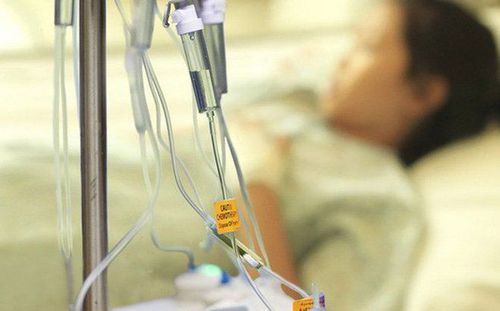
Hóa trị là phương pháp dùng thuốc để phá hủy các tế bào ung thư
Drug classes commonly used to treat chronic lymphocytic leukemia include:
Bendamustine (Bendeka, Treanda) Fludarabine (Fludara), which is most common in young patients and does not have the deletion mutation on chromosome 17. Pentostatin (Nipent) Cladribine (Leustatin) Chlorambucil (Leukeran) Cyclophosphamide (Cytoxan) Some of these side effects include fatigue, increased risk of infection, nausea and vomiting, hair loss, loss of appetite, and diarrhea. . These undesirable effects vary depending on the location and dose of the drug, which will disappear after stopping the drug.
Targeted therapy This is a treatment that directly affects specific proteins, genes or the environment around the cell tissue. This treatment not only prevents the growth and spread of malignant cells, but also limits the destruction of healthy cells. Targeted therapies for chronic lymphocytic leukemia include:
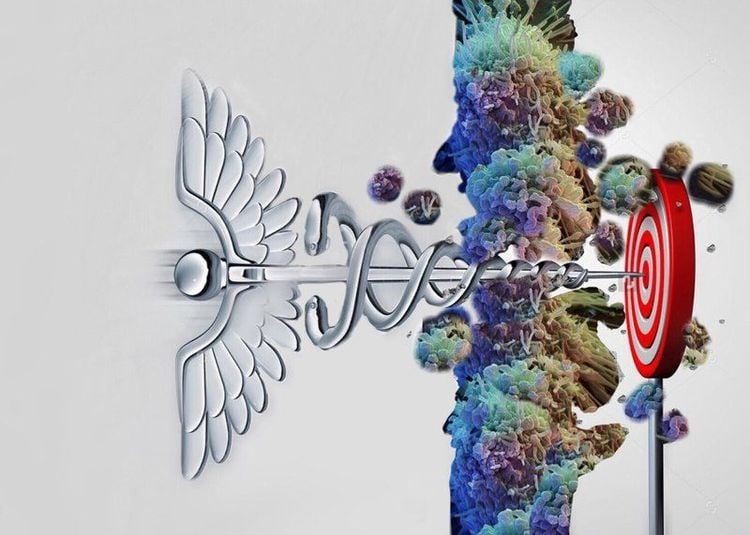
Điều trị trúng đích là phương pháp điều trị tác động trực tiếp đến các protein, gen đặc hiệu hoặc môi trường quanh mô tế bào
Rituximab (Rituxan) Ofatumumab (Arzerra) Obinutuzumab (Gazyva) Venetoclax (Venclexta). Protein kinase inhibitors: Kinases are a group of enzymes found in healthy cells and cancer cells. However, cancer cells are destroyed when the drug inhibits the activity of specific kinase enzymes. This class of treatment is relatively new and is currently only applied to cases of recurrent or more severe chronic lymphocytic leukemia. Currently used protein kinase inhibitors such as Ibrutinib (Imbruvica), Idelalisib (Zydelig). Adverse effects vary by drug class. Patients taking rituximab, obinutuzumab, or ofatumumab for the first time may experience fever and chills. Treatment with Venetoclax can cause kidney failure and tumor lysis syndrome, a life-threatening condition.
Radiation Therapy Radiation therapy is a method of using high-energy rays to destroy malignant cells. The radiotherapy schedule is reasonably distributed according to the time frames. Radiation therapy is not effective because chronic lymphocytic leukemia occurs almost throughout the body. However, radiation therapy is useful in shrinking the size of the spleen and enlarged lymph nodes, providing relief from symptoms.
Adverse effects of radiation therapy are fatigue, mild skin reactions, abdominal discomfort, and decreased bowel movements. Most side effects go away quickly after stopping treatment.
Surgery In chronic lymphocytic leukemia, surgery is sometimes used to remove the spleen. Before the procedure, patients should be consulted about side effects from specialized surgeons.
Bone marrow transplant or stem cell transplant A bone marrow transplant is a procedure in which a patient's bone marrow is replaced with specific hematopoietic stem cells, which will later develop into healthy bone marrow. Today, this method is often called a stem cell transplant instead of a bone marrow transplant as before because it is the stem cells in the blood that are actually what is transplanted.
Stem cell transplants are divided into 2 main groups: allogeneic (allogeneic - ALLO) and autologous (AUTO). ALLO uses donor stem cells, while AUTO uses the patient's own stem cells. ALLO is often chosen in the case of chronic lymphocytic leukemia in young patients when other treatments have not been effective or when the disease has a high probability of recurrence. The goal of treatment is to destroy all cancer cells in the bone marrow, blood, and other parts of the body with high doses of chemotherapy and/or radiation to then allow the stem cells to make up the bone marrow. new healthy.
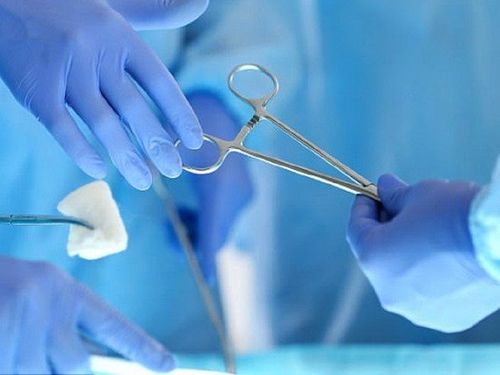
Trong bệnh bạch cầu lympho mạn, phẫu thuật đôi khi được áp dụng để cắt lách
Please dial HOTLINE for more information or register for an appointment HERE. Download MyVinmec app to make appointments faster and to manage your bookings easily.
Reference source: cancer.netMORE:
Role of red blood cells, platelets, white blood cells in the body The number of white blood cells in the body is how much? What diseases can blood tests indicate?





